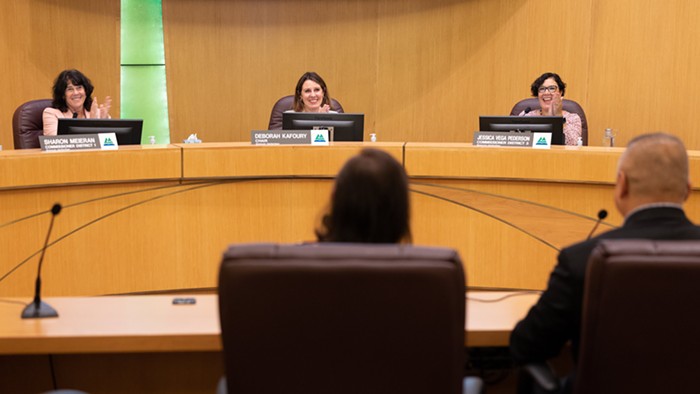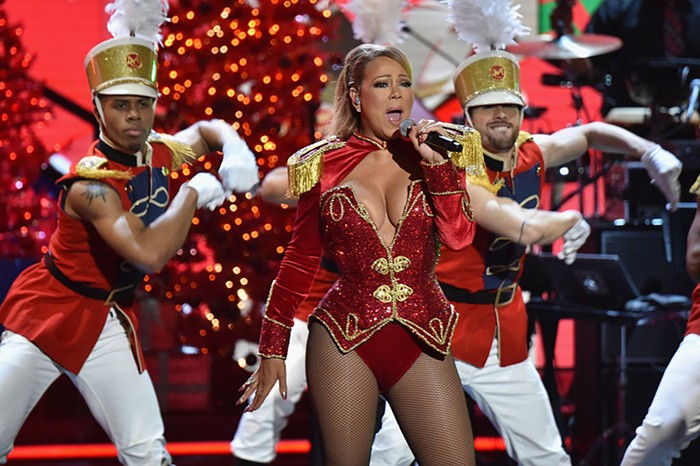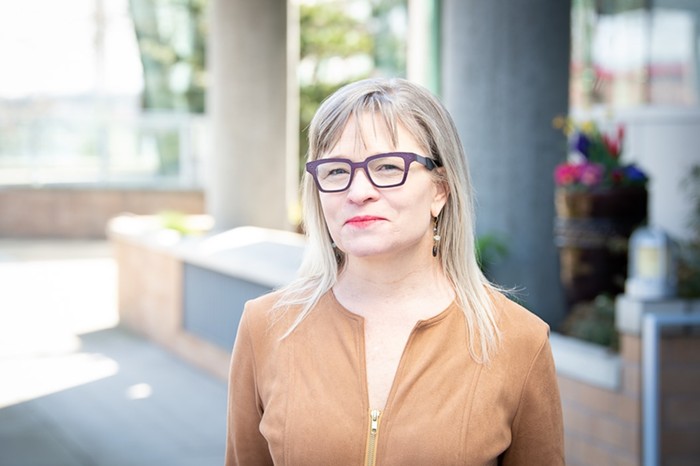WALKING THROUGH THE Portland Art Museum’s new Andy Warhol exhibition, I wondered if it’s possible to see a Warhol collection in any fresh or revealing way. If you’ve been in a dorm room, or used a mouse pad, or done a Google image search, or listened to a Velvet Underground album, you know what the soup cans and the Marilyns and the bananas look like. There aren’t many surprises in what PAM’s billing as “the largest Andy Warhol print retrospective ever,” right down to the fact that the exit is through a gift shop aisle packed with Warhol kitsch.
And maybe that’s as it should be. While I don’t love his work the way I love the work of his protégées (like Jean-Michel Basquiat) or his muses (like Debbie Harry), I like Warhol fine. His importance to art history isn’t really up for debate, and if you haven’t spent much time with his work, this sprawling exhibition is a good way to get acquainted. But I was worried I would be bored—especially when I walked in and was instantly hit in the synapses by the iconic (in every sense) pop-art portraits and Warhol quotes I associate more with square-framed art prints my friends had in college than gallery wall text.

If this sounds insufferable to you, go upstairs, where the real treasures await—in a room entirely devoted to the jaunty line-art Warhol made early in his career as a commercial illustrator before he perfected his pop art veneer. Warhol’s style is almost unrecognizable in these offset lithographs, augmented by whimsically applied watercolor. They’re funny and full of visible imperfections and cartoonish subject matter—animals, naked baby angels, fancy high-heeled shoes. Coy cartoon cherubs pop up from tulips the color of Revlon Cherries in the Snow. They wouldn’t be out of place on the book jacket of an Angela Carter novel. There’s a blue cat that would be right at home in an Eric Carle picture book. If you like Edward Gorey’s Gashlycrumb Tinies, you will delight in an entire series of line-drawing illustrations depicting doomed couples of antiquity paired with irreverent rhymes by Warhol collaborator Ralph Thomas Ward, AKA Corkie. One such gem: “Eurydice loved Orpheus and when she died he raised a fuss, he played his harp and went to hell—it didn’t work out very well.”
I could have spent a very long time in this one room of prints. They’re so retro and cute that it’s like seeing Andy Warhol’s Trapper Keeper doodles. But more importantly, they make the exhibition worth seeing for those of us who struggle to get excited about overexposed soup.













